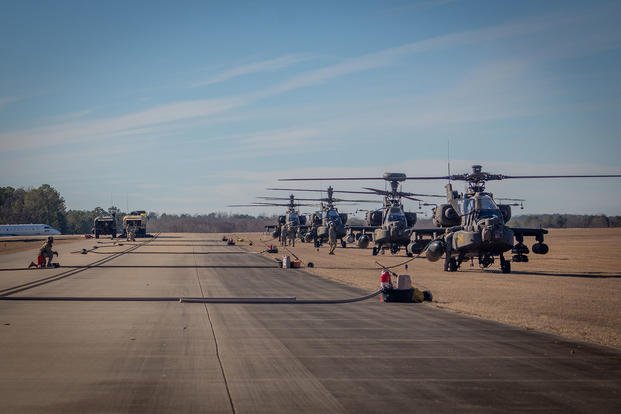The Army will have its helicopter pilots conduct hours of additional training after a rash of a dozen crashes that has killed 10 service members just since October.
"We've seen a troubling trend with our accident rates, and certainly any loss of life is 100% unacceptable," Maj. Gen. Walter Rugen, director of Army aviation, told reporters in a brief press conference Wednesday. "And then obviously, even when we have accidents that we lose the aircraft or severely damage the aircraft, we consider that unacceptable, too."
The Army has seen a troubling trend of helicopter crashes, particularly among Apache and Black Hawk helicopters. Last year, the service saw 10 incidents and 14 fatalities.
Read Next: Unsupervised: Military Child Care Centers Slow to Report Abuse with Little Oversight
Now, the service is adding four to six hours worth of training for pilots that focuses on spatial awareness and maintenance issues, though the service was unclear on what that training means in practice.
The move comes after Army aircraft have been grounded twice in the past year -- including once after a crash last April involving two Black Hawks out of Fort Campbell, Kentucky, that killed nine soldiers in one of the deadliest training incidents in the service's history.
The Army National Guard also grounded its aircraft in late February after two of its pilots died in an AH-60 Apache crash in Mississippi. In a prior incident Feb. 12, a National Guard Apache crashed near Salt Lake City, Utah, and both pilots survived.
Service planners did not announce any significant tweaks to training or maintenance after those groundings.
In March, two soldiers were injured when their Apache crashed at Joint Base Lewis-McChord in Washington state during what base officials described as routine training. Then, 48 hours later, two more soldiers were hospitalized when their Apache went down at Fort Carson, Colorado. Two New York Guardsmen died in a UH-72 Lakota in southern Texas while supporting federal border security. A border patrol agent also died.
"We get into aspects of flight where the crew must reinforce how to revert back to knowing where you are and where your aircraft is with respect to the ground. And so it always bears reinforcing any spatial disorientation training," Rugen said.
The service declined to comment on whether Rugen was putting the blame for recent fatalities on the pilots. Most of those notable crashes are still under investigation so it's unclear why the Army is suggesting pilot error has been the cause. Historically, the services have been more hesitant to suggest problems with mechanical issues, aircraft design or fundamental matters with how they train pilots.
The incident rate with Army aviation so far this year is 3.22 mishaps for every 100,000 hours, a significant increase from last year's 1.08 crashes or other notable incidents for every 100,000 hours flown, said Brig. Gen. Jonathan Byrom, who oversees Army safety, at the press conference.
Active-duty aviation units are expected to complete the additional training by May 10. The Guard and reserve have an additional month.
Related: 2 Fort Carson Soldiers Injured in Second Apache Helicopter Crash in 48 Hours












